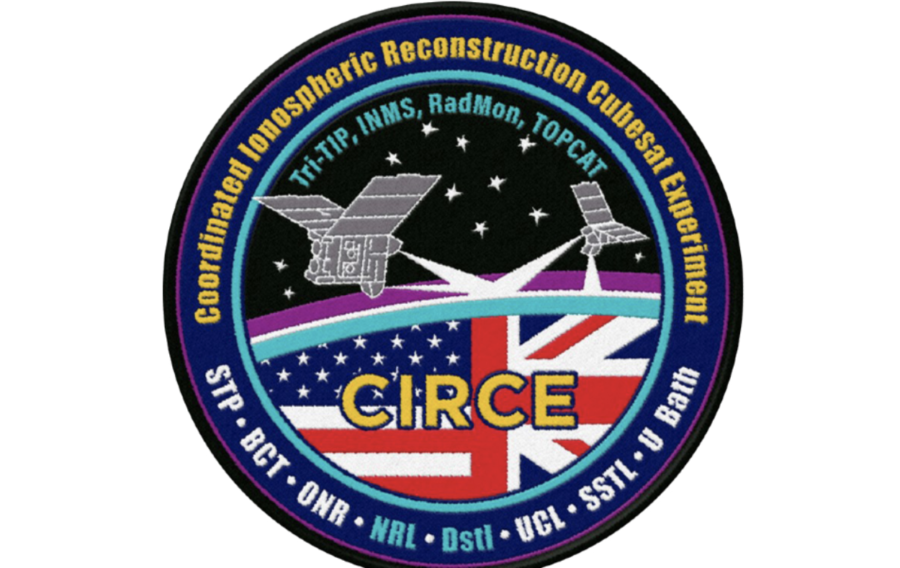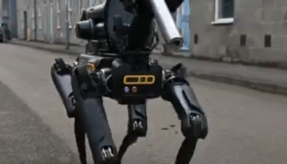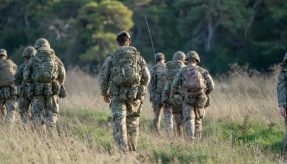
The Defence Science and Technology Laboratory’s (Dstl) miniaturised space weather instrumentation suite will be aboard Virgin Orbit which is aiming to launch from Spaceport Cornwall later in 2022.
Dstl’s miniaturised space weather instrumentation suite will be one of the payloads aboard Virgin Orbit which is targeting the first UK satellite launch this summer from Spaceport Cornwall in Newquay.
Virgin Orbit’s Launcher One rocket takes off horizontally, carried aloft by a modified Boeing 747 jet, named Cosmic Girl.
The Coordinated Ionospheric Reconstruction Cubesat Experiment (CIRCE) satellite mission comprises two 6U cube-satellites that will be launched into a near-polar low Earth orbit in a string-of-pearls configuration (targeting 555 kilometres altitude).
Each 6U satellite bus measures 10cm by 20cm by 30cm (the size of a cereal box), and will fly almost identical instrument capability on both satellites.
Dstl is partnering with the US Naval Research Laboratory (NRL) on the joint mission.
The UK contribution to CIRCE is the In-situ and Remote Ionospheric Sensing (IRIS) suite, complementary to NRL sensors and comprising 3 highly miniaturised payloads developed for Dstl by University College London (UCL), University of Bath, and Surrey Satellite Technology Ltd (SSTL), drawing on expertise from the University of Surrey.
CIRCE will characterise a region of the space environment, the ionosphere, which is important for a range of defence and civil applications and can impact GPS, communications and sensing technology – both in space and on the ground.
All 3 IRIS payloads together occupy a small volume no more than 10cm by 10cm by 20cm. Miniaturisation of space weather sensors means that a significant capability is packed into each satellite bus provided by Blue Canyon Technologies.
This type of miniaturisation could pave the way for deployment of many more such sensors as a routine inclusion on other satellites thanks to their small size, weight and power.
The result would expand data collection for the near-Earth space environment, and enhance space weather modelling capabilities.
Understanding space weather is crucial to the safe operation of satellites.
Solar flares and geomagnetic storms can severely impact satellites in space, as highlighted by the recent loss of 40 Space X Starlink satellites in February 2022.
During the mission the satellites will be operated from a series of ground stations in conjunction with international partners.
As well as data collection, the miniature satellites will act as technology demonstrators, with their utility and performance being assessed to de-risk future missions.
A unique aspect of the CIRCE mission is the ability to characterise the same volume of space within a very short return period, enabled by the constellation of 2 near identical spacecraft actively maintaining a lead-follow configuration in the same low Earth orbit, separated by 250 to 500 kilometres.
A single satellite in low Earth orbit has an approximately 90 minute revisit period; a multi-satellite constellation would improve on this, but it is the dual-nature of the 2 relatively closely-spaced CIRCE satellites that is anticipated to provide unique insights into the temporal dynamics associated with specific ionospheric structures.
Air Vice-Marshal Paul Godfrey, Commander of UK Space Command, said: “Defence science and technological activity in space has never been more important, whether it is in support of military operations or helping to combat climate change, defence innovation is at the forefront of this work.
“After it enters orbit from Spaceport Cornwall, CIRCE will enhance our understanding of space weather and help us to keep critical satellites safe from the many hazards associated with operating in space.”
Dr Paul Hollinshead, Dstl Chief Executive, said: “The CIRCE mission showcases the UK’s academic and industry space capabilities and extends the physical boundaries of our collaboration.
“This joint endeavour with our US partners shows there are no limits to what can be achieved with our international allies.”
If you would like to join our community and read more articles like this then please click here.
CIRCE Dstl Space X Starlink Spaceport Cornwall UK Space Command







